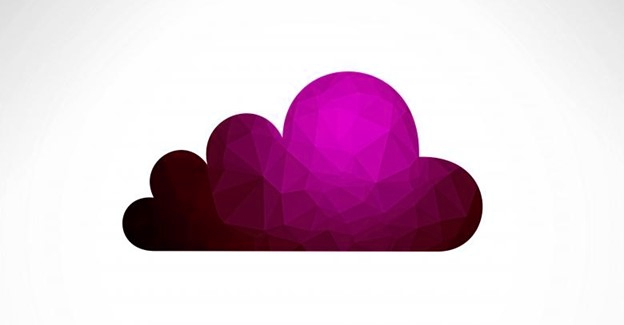
According to Deloitte’s 2024 Mapping Digital Transformation Value report, there is a sea change in how companies are investing their innovation budgets. Fewer dollars are being invested in transformational change. Instead, “Budgets are going toward more concrete business cases: entering new markets, launching new products, and modernizing the core.”
And a primary driver for this change is value.
The survey indicates increased investments technologies respondents perceived as driving the most value—GenAI, traditional AI, and data architecture are chief among them.
Overcoming Innovation Ambiguity and Identifying Value
Innovation is inherently ambiguous. It is in complete opposition to a concrete business case. You may have a concrete problem but be unclear about whether or how an emerging technology can solve it. Or maybe you know you need to start experimenting with new technology, but you haven’t defined what it can do for your organization. Both those scenarios are a long way from a business case and even further from demonstrating value.
So how do you bridge the gap?
While it may seem counterintuitive, putting some structure around the innovation process can be advantageous, particularly when it comes to narrowing in on a business case and demonstrating value. It can provide you with space to think things through, home in on a problem, and explore solutions from several different angles. It can unearth the unknowns and root out costly gotchas that might prevent you from moving forward. A structured innovation process provides an opportunity to figure out if something.
Innovation often ends with proof of concept that demonstrates that something can be done. That may solve the business-case challenge, but it’s not enough show value. Proof of value is a more modern approach. Proof of value is about more than if something can be done—it’s about whether it should be done. It’s intended to show whether it solves your business problem, is financially and operationally viable, and what it will take to pilot and scale.
JumpStart—A Value-Based, Guided Process for Technology Innovation
Kopius’ flexible future state and product ideation program, JumpStart, is a framework for innovation designed to help you explore possibilities, narrow down business use cases, and demonstrate value. And while JumpStart is a great launchpad for exploring both traditional and GenAI, it’s also a good fit for other types of innovation. Manufacturing, healthcare, and retail organizations, for example, may want to get a better understanding of their physical environment through IoT. And companies of all types have ideas for digital products they’d like to develop, but just don’t have the capacity.
JumpStart is technology agnostic—often, the solution to a particular challenge includes many integrated approach involving AI, IoT, AR/VR, etc.
The possibilities are endless.
Regardless of what you’re interested in exploring, the foundational process is similar, and typically entails—and it typically wraps up with a proof of value.
- Research – First, we explore emerging trends in your space, how early adopters in are using new technologies, and what’s happening in other industries that might be applicable.
- Dialog & Discovery – Next, we bring all the key stakeholders to the table to explain any relevant new technology, present the research, and discuss challenges and opportunities.
- Brainstorming & Whiteboarding – Then, we brainstorm and whiteboard potential solutions, prioritize by need and impact, and provide space for you to consider next steps.
- Proof of Value – Last, we bring together a team to prototype a solution that tangibly demonstrates whether something can be done, and what it will take to make it happen.
The goal of the JumpStart process is to for you to have the information you need to determine if the innovation path you are considering makes sense—whether it’s achievable, what the business case is, what the obstacles are, and if it will drive value for your organization.
While JumpStart typically ends with the proof of value, it’s rarely the end of the project lifecycle. If you’re looking to launch a pilot initiative or scale a program or technology across your organization, we can help with that, too.
JumpStart in Action—Three Real-World Examples of How
Innovation looks different.
To get a better understanding of how JumpStart future state and product ideation workshops can help you innovate and solve your most pressing challenges, I’ve pulled together three real-world examples.
- An AI solution for triaging automotive warranty claims – A leading auto manufacturer with a large warranty business wanted to explore how AI could help them triage claims. They needed to understand if it was a practical solution and what implementing it would entail. The JumpStart and proof of value process proved their idea was achievable, but it brought to light some underlying issues around data and integrations. They came away with not only a better understanding of what was possible, but also what it would take to get there.
- An IoT solution for monitoring vaccines storage temperatures – A global healthcare nonprofit that provides vaccines needed to monitor the temperatures of refrigerators in remote locations with inconsistent power supplies to ensure the vaccines’ efficacy. The JumpStart and proof of value process was the launchpad for a viable solution that included everything from building a circuit board, to operationalizing it with 1G connectivity in the Azure Cloud. Once the initial project was a starting point for a host of related solutions, including refrigerated backpacks and fanny packs.
- A competitive gap analysis for a robotics company’s app – A manufacturer of robotic household appliances wanted to benchmark their app experience and physical against their competitors’ solutions. They needed objective real-world insights into their strengths and opportunities for improvement, so they knew where to focus future development efforts. The JumpStart and proof of value process led to tangible enhancements to both their app and product that improved customer experience.
JumpStart Your Technology Project—and Stay on Track—with Kopius!
At Kopius, we harness the power of people, data and emerging technologies to build innovative solutions that help our customers navigate continual change and solve formidable challenges. To accelerate our customers’ success, we’ve designed a JumpStart program to prioritize digital transformation together.


